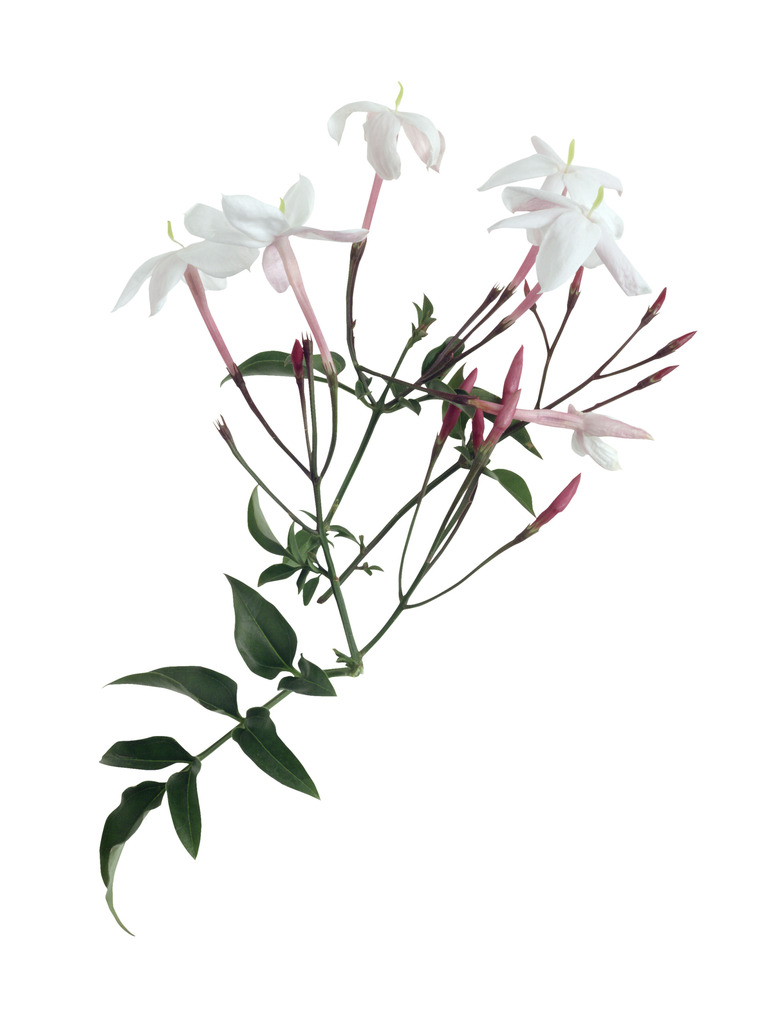How To Grow Jasmine On My Fence
True jasmines, which belong to the Olive family, are native to tropical regions in Asia but will grow in any area with a conducive climate. Jasmine may grow as a thick bush or a climbing plant.
True jasmines, which belong to the Olive family, are native to tropical regions in Asia but will grow in any area with a conducive climate. Jasmine may grow as a thick bush or a climbing plant. Growing fragrant jasmine along a fence will create a curtain of color during the summer and a deep green during non-flowering seasons. While this flowering plant is a natural climber, you still need to guide it to grow in the right direction. Guide the plant to a sturdy climbing support by leading it to your fence.
Step 1
Plant jasmine in a sunny location near the fence or supportive structure. Position the plant no more than 1 to 2 feet away from the fence.
- True jasmines, which belong to the Olive family, are native to tropical regions in Asia but will grow in any area with a conducive climate.
- While this flowering plant is a natural climber, you still need to guide it to grow in the right direction.
Step 2
Force the plant to grow upwards, or horizontally, by positioning a tall stake at the base of the plant. Allow the plant to grow up the stake before guiding it vertically. This allows the plant to grow a stronger base. Leave the plant to grow for two weeks to one month before training it vertically toward the fence.
Step 3
Fertilize the plant with 15-0-15 fertilizer pellets after planting. Repeat the fertilization once a year for optimum growth.
Step 4
Guide the tips of the plant through the fence and tie it loosely into place with string. Poke the tips through the chain link holes or loosely wind it around wooden fence slats. Check the strings monthly and move them as needed to guide the jasmine's growth along the fence line.
- Force the plant to grow upwards, or horizontally, by positioning a tall stake at the base of the plant.
- Guide the tips of the plant through the fence and tie it loosely into place with string.
Train Jasmine On A Wire Fence
Plant the jasmine plant in full sun to partial shade in well-drained soil at the base of the wire fence. If the soil is heavy, work in some compost or peat to lighten it before planting. Soil should be able to remain moist without becoming soggy or holding water. Weave the jasmine vines into the wire fence. Train the growing ends of the vines with twine or garden tape to direct them into areas of the wire fence you want them to cover, if desired, after the jasmine has become established.
Things Needed
- 15-0-15 fertilizer pellets
- String
Tip
Remove string supports after the jasmine reaches 6 feet in height.
References
- Funk and Wagnall's Deskset Encyclopedia; Wagnalls; 1997
- North Carolina State University: Jasmine
- Sunset: Training and Pruning Vines
- North Carolina State University: Training/ Pruning Vines
